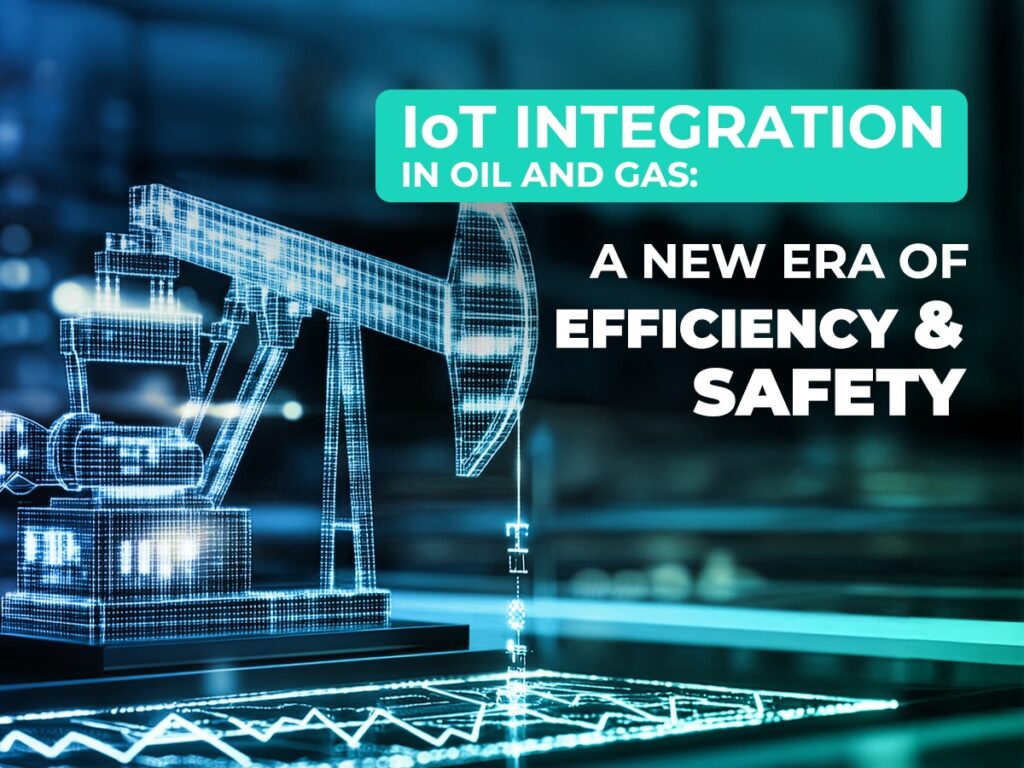IoT Integration in Oil and Gas: A New Era of Efficiency and Safety

Recently, the oil and gas industry has witnessed a rapid shift toward digital transformation. Among the leading technologies driving this shift is the Internet of Things (IoT), which offers powerful capabilities in remote monitoring, real-time data acquisition, predictive maintenance, and safety enhancement. The complexity, scale, and hazardous nature of oil and gas operations make IoT a particularly valuable tool for increasing efficiency and reducing operational risks.
In this article, we will explore how IoT applications are being utilized across upstream, midstream, and downstream segments of the oil and gas industry — focusing on real-time monitoring, predictive maintenance, pipeline integrity, safety, and operational optimization.
Real-Time Monitoring and Remote Operations
One of the most important applications of IoT in the oil and gas sector is real-time monitoring. In upstream operations, IoT-enabled sensors are deployed in drilling rigs, wellheads, and subsea equipment to continuously collect data on temperature, pressure, flow rates, and equipment performance. This data is transmitted in real time to central control rooms, where it is analyzed and used to make quick, data-driven decisions.
Real-time monitoring allows operators to detect irregularities early, minimize equipment failure, and optimize production processes. Moreover, by enabling remote supervision of offshore and hard-to-reach assets, IoT reduces the need for manual inspections, lowering the risk to human life and reducing travel and maintenance costs.
Predictive Maintenance and Asset Reliability
Traditional maintenance strategies in the oil and gas industry often involve scheduled checks or reactive repairs. These approaches can either result in unnecessary maintenance or unexpected equipment failure. IoT revolutionizes this process through predictive maintenance.
Sensors embedded in critical machinery (e.g., pumps, compressors, valves, and turbines) track performance metrics and operating conditions in real time. By using AI and machine learning, the collected data can be analyzed to predict potential breakdowns before they occur. This enables timely intervention, minimizing unplanned downtime and extending asset life.
Predictive maintenance also improves overall asset reliability, allowing companies to schedule maintenance during non-peak periods and reduce associated operational disruptions.
Pipeline Monitoring and Leak Detection
In midstream operations, the safe and efficient transportation of oil and gas through pipelines is vital. IoT technology plays a key role in enhancing pipeline monitoring and detecting leaks or structural weaknesses.
Smart sensors and acoustic monitoring devices are installed along pipelines to measure changes in pressure, flow, vibration, and temperature. When anomalies are detected, the system sends immediate alerts to control centers, enabling rapid response and minimizing environmental damage. Additionally, when integrated with geographic information systems (GIS), IoT platforms can accurately locate the source of a leak.
This capability is particularly important for pipelines running through remote or environmentally sensitive areas, where rapid response is critical.
Enhancing Safety and Environmental Compliance
The oil and gas industry are inherently high-risk, making safety a top priority. IoT helps to create safer working environments by monitoring both personnel and environmental conditions in real time.
For example, gas detection sensors can identify dangerous emissions like hydrogen sulfide or methane, while fire and heat sensors detect abnormal temperature spikes. Wearable IoT devices worn by workers can monitor vital signs, fatigue levels, and exact location, allowing for quick evacuation and emergency response if needed.
Furthermore, IoT assists companies in maintaining environmental compliance by tracking emissions, waste levels, and water quality. Continuous monitoring ensures adherence to regulations and supports more sustainable operations.
Operational Optimization in Downstream Facilities
In downstream sectors such as refining and distribution, IoT contributes to smarter, more efficient operations. Refineries equipped with IoT-enabled sensors can monitor variables such as fuel quality, process temperature, energy usage, and equipment efficiency.
This data is used to optimize refining processes, reduce energy consumption, and lower emissions, leading to increased profitability and sustainability. Additionally, IoT supports automation in inventory management, logistics, and supply chain coordination by providing real-time data on storage levels, product movement, and delivery schedules.
Through enhanced process control and visibility, IoT enables faster decision-making and improved responsiveness to market demands.
As the oil and gas industry navigates increasing operational complexity, cost pressures, and environmental concerns, the adoption of IoT is proving to be both a technological necessity and a competitive advantage. From drilling platforms and pipelines to refineries and distribution networks, IoT enables smarter, safer, and more efficient operations across the entire value chain.
By leveraging real-time data, predictive insights, and remote automation, the oil and gas industry can achieve greater reliability, enhanced safety, and sustainable growth in an increasingly digital world.
Follow IoT Misr to stay updated on the latest IoT innovations transforming the energy sector and beyond.